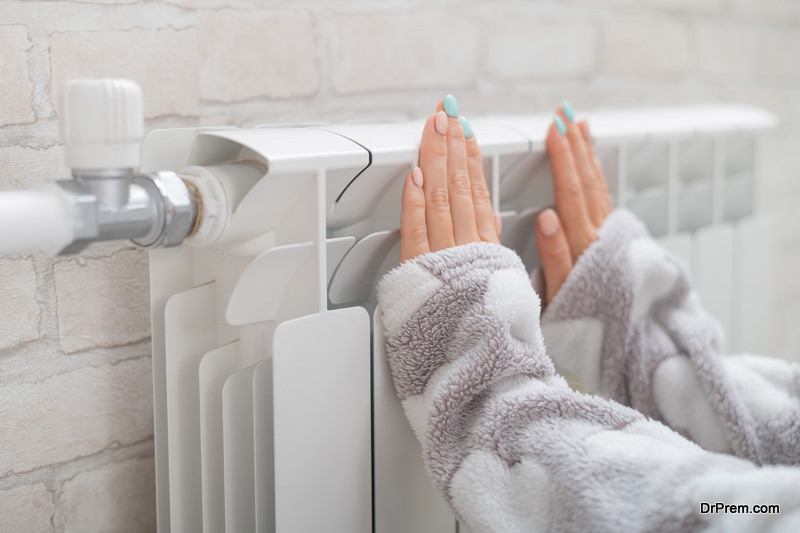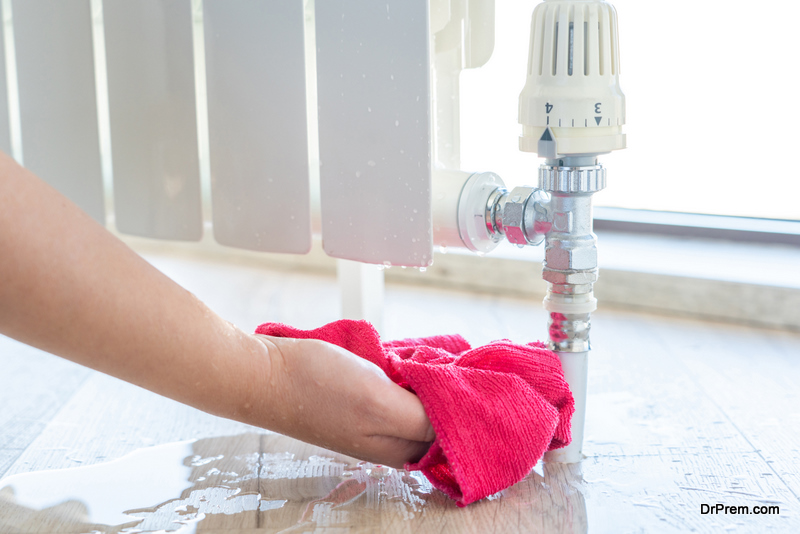A bad or failing radiator can prove to be extremely detrimental to your day-to-day life. Not only does it cause practical issues, such as a lack of warmth in your home, but you may also find yourself in a financially difficult situation, having to pay in excess for repairs at the best, and a brand-new radiator at the worst. Radiators in the UK are easy to maintain if you watch out for the following signs of a bad or failing radiator.
1. Lack of Heat
 If you realise your radiator has a lack of heat or is cold to touch, this is a common sign of a faulty radiator. It could be due to a variety of reasons, such as a clogged pump, a blown fuse, or a tripped circuit. If it isn’t an evident electrical problem, it is advisable to clean the pump appropriately, following the manufacturer instructions closely. In doing so, you can release any excess air that may have been trapped inside. Additionally, you can turn off and then turn on the diverter valve which is alongside the boiler. If none of this works, you should contact a radiator technician, and find out whether the radiator pump needs replacing.
If you realise your radiator has a lack of heat or is cold to touch, this is a common sign of a faulty radiator. It could be due to a variety of reasons, such as a clogged pump, a blown fuse, or a tripped circuit. If it isn’t an evident electrical problem, it is advisable to clean the pump appropriately, following the manufacturer instructions closely. In doing so, you can release any excess air that may have been trapped inside. Additionally, you can turn off and then turn on the diverter valve which is alongside the boiler. If none of this works, you should contact a radiator technician, and find out whether the radiator pump needs replacing.
2. Cold Up Top, Warm at the Bottom
If you find your radiator to be cold at the top, while hot at the bottom, you may well need to bleed your radiator. Thankfully, no external help should be necessary for this. To do this, you simply need to turn off the radiator pump, laying down a towel for any excessive spillage, along with a bucket, before opening the radiator valve with a suitable radiator key. When water begins to empty into the bucket, this is the time to close the valve.
3. Warm Up Top, Cold at the Bottom
 If you find the opposite of the previous issue is occurring, and your radiator feels warm at the top, yet cold at the bottom, this could be due to a number of things. One step you can take is you can remove the radiator and separate it from the wall before flushing it with water. If this does not have any positive impact, you should call a professional straight away for guidance on the matter. When you cannot diagnose a problem, it is difficult to predict the repair cost, which is why a radiator technician, or plumber, should be consulted.
If you find the opposite of the previous issue is occurring, and your radiator feels warm at the top, yet cold at the bottom, this could be due to a number of things. One step you can take is you can remove the radiator and separate it from the wall before flushing it with water. If this does not have any positive impact, you should call a professional straight away for guidance on the matter. When you cannot diagnose a problem, it is difficult to predict the repair cost, which is why a radiator technician, or plumber, should be consulted.
4. Leaking
When the cause of a radiator leak isn’t immediately evident, it can be a difficult DIY task to address. Repair costs vary, usually depends upon the length of the as well as whether we can fix the problem part, as otherwise you need to buy a brand-new radiator entirely.
A common symptom of a cracked radiator to watch out for is water accumulating on the floor below it. If a large amount of water appears around your radiator, this will indicate that it needs a repair at the least. If your radiator is leaking, it is advisable to contact or a plumber or technician as soon as possible for specialist assistance.
Article Submitted By Community Writer




